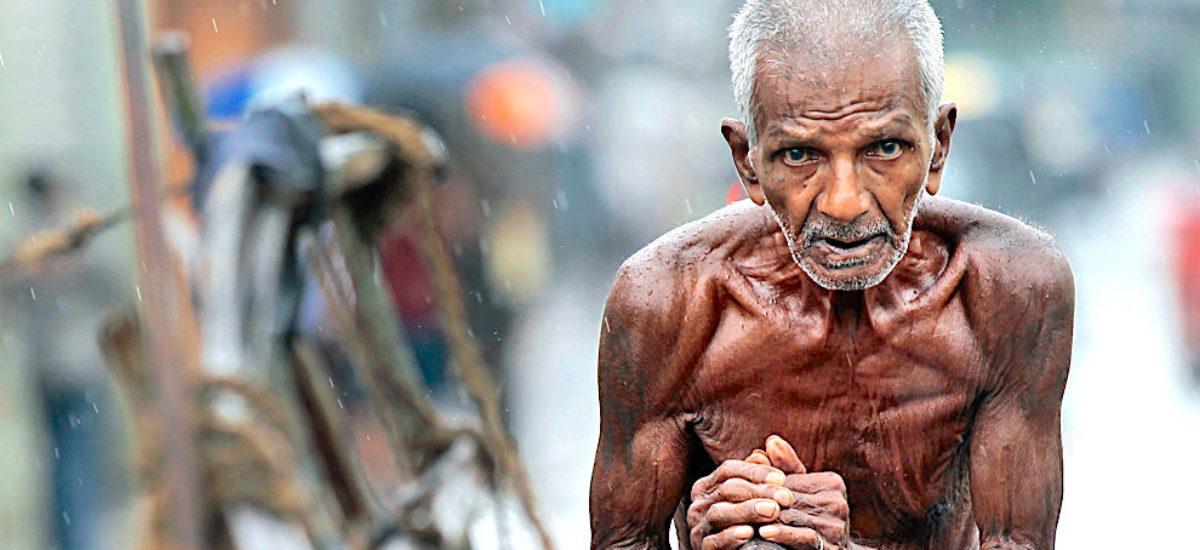Photo courtesy of Sri Lanka Brief
Sri Lanka plunged into a dystopian economic reality in 2022. Even in the present global downturn few countries match it in the stunning speed and severity of its collapse. The economy has contracted by nearly 10% this year and Sri Lankans know what this macroeconomic number feels like in human terms – a devastating loss of incomes, hunger and under nourishment, scarcity and ill health. New data on poverty underscores this gloom. The proportion of Sri Lankans living in extreme poverty and unable to meet the most basic of needs has at least doubled. This suggests a crisis that that can persist well beyond the immediate. A significant body of economics modelling shows us that households who suddenly fall into poverty can remain trapped there for generations.
The World Bank estimates Sri Lanka’s poverty rate (the proportion of the population living on less than the equivalent of $3.65 a day) to have doubled from 13.1% in 2021 to 25.6% in 2022. This corresponds to roughly 2.7 million additional people falling into extreme poverty within the span of just one year. Using a different methodology to the World Bank, Prof. Wasantha Athukorala of the Department of Economics and Statistics at the University of Peradeniya came up with even higher estimates that show 42% of households to be in poverty. By any measure, this is a staggering increase. For some perspective, the COVID-19 crisis increased the poverty rate by just over one percentage point in the year 2020. And that was after a period of significant poverty reduction. Poverty rates fell from nearly 30 percent in 2006 to just over 11% in 2019 although this masked shocking regional differences with Mullaitivu and Kilinochchi districts having poverty rates of nearly 60%.
As the Nobel prize winning economist Amartya Sen pointed out over two decades ago, poverty destroys a person’s freedom (or capability) to lead a fulfilled life – a life they have reason to value[i]. Using this lens, a country’s economic performance must be judged on whether it enhances such freedom by reducing poverty in its many dimensions such as income, education and health. Historically, Sri Lanka has been considered a relative development success due to its performance in areas such as health and education. But could this human progress now unravel with the sudden and large increase in poverty we are witnessing? Has the economic collapse pushed Sri Lanka onto a painful path of reverse development?
This would partly depend on whether the present alarming spike in poverty persists in the longer term. A set of micro economic models based on the concept of a poverty trap propose that once people fall into poverty there is a real danger that they remain ensnared in it. The idea here is quite simple. Households are seen as needing a minimum threshold level of assets or income if they are to avoid poverty and if they are to improve economically over time. Those with incomes/assets below this threshold get stuck in a poverty trap. And if an economic shock like the Sri Lanka crisis causes the assets and incomes of a household to drop below this threshold, it is hard for them to recover. So, the increase in poverty is not temporary. The poor remain poor.
The poverty trap is a theoretical construct. But research from countries around the world shows us various ways in which poverty traps can occur. The following are the most relevant to the Sri Lankan context.
- When there are widespread job losses in an economy, people are forced into work that pays below the minimum poverty trap threshold and continuing economic contraction keeps them there. The Sri Lankan crisis has resulted in a catastrophic loss of livelihoods, with surveys showing around 60% of households to have lost half their monthly incomes. In Sri Lanka, around 65% of the workforce is in the informal economy. In sectors such as tourism this is even higher – around 80%, according to ILO estimates. Informal sector jobs are non-contractual and insecure so they quickly disappear when the economy stalls. Poverty trap scenarios can occur when who are when those already in irregular, low paid work experience a sustained decrease in the demand for their labour.
- Asset losses also cause poverty traps. Falling incomes and sharply rising prices can force households to sell or to give up income generating assets just so that they can maintain basic consumption (this is referred to as consumption smoothing). For example, a farmer may sell a small piece of land or a three wheel driver may give up the lease on his vehicle so that his family can eat. But they are now foregoing potential future earnings from their assets; earnings that would have kept them above the poverty trap threshold. And once they lose assets, they never regain them, even when the original economic shock abates. Land may have been sold cheap and may become too expensive to buy back. Higher interest rates can prohibit the taking on of a new lease.
- Poverty traps also emerge due to the loss of human capital. Human capital refers to the knowledge, skills and physical wellbeing that people invest in and accumulate throughout their lives. It determines productivity and earnings. One of the most harmful human capital effects of an economic crisis occurs through negative effects on child nutrition. Right now in Sri Lanka, there is widespread under nutrition and malnutrition among children (exact estimates vary). While this is distressing in itself, it also fosters inter-generational poverty. Undernutrition in children leads to wasting and stunting. This, in turn, erodes cognitive ability and educational attainment which could result in future earnings dropping below the poverty trap threshold. A global study that followed 1.2 million children over a 30 year period found that when economic growth fell by 10%, the rate of wasting increased by 17% since falling incomes meant less food intake. And what is important here is that even when the change in diet was fairly temporary (because economic conditions improved quickly), the effects on children’s cognitive skills and educational achievement were often permanent.
- Another basis for poverty traps come from a relatively new area of research in behavioural economics, sometimes referred to as the economics of hope. The reasoning here springs from the idea that expectations and hopes affect people’s economic behaviour. Economic shocks can inflict crushing cognitive and mental burdens on families. Once a family falls into poverty, these mental burdens could keep them in poverty, not through any fault of theirs, but because surviving in poverty seems to be the only option available. A cognitively burdened household has been compared to an air traffic controller who is trying to stop two planes from colliding – their focus is so total that they are prone to neglect other planes in the airspace. Similarly, the preoccupation with grappling with immediate monetary issues can result in an attentional capture for the poor; they are so bent on survival that they cannot easily see options that may lift them economically in the longer term, such as better schooling for their children. This kind of scenario is very relevant to the Sri Lankan crisis. Vulnerable people are battered by stresses coming at them from so many directions – shortages, job and income losses, excruciating inflation, ill health, the lack of leisure and The panic about securing even a single meal a day leaves little space for aspirational hope.
If reverse development in Sri Lanka is to be averted, it is of course essential that poverty is targeted by policy interventions. A priority should be preventing households from falling into poverty traps in the first place. Social assistance programmes are notoriously weak in terms of coverage and generosity even compared to countries with similar income levels. So there is an urgent need to substantially increase the scope and scale of cash transfers. Cash transfers alleviate immediate consumption poverty and can guard against human capital based poverty traps. But, as evidence from other countries with rapidly worsening hardship has shown, we also need big push policies aimed at all types of poverty traps, for instance, by maintaining access to assets through the credit market and protecting the informal sector. And much more fundamentally, if Sri Lanka is to emerge from this present dystopia, any economic recovery must work for all its citizens by delivering humane and equitable development.
[i] Amartya Sen (2000) ‘A decade of human development’, Journal of Human Development, vol 1, no 1, p18.)


